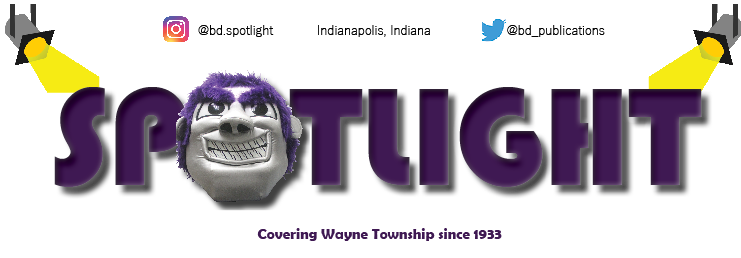Comics in the classroom
Comic Con panel discusses the benefits of graphic novels in schools
March 18, 2014
This past weekend, the convention center hosted the 2014 Indianapolis Comic Con. (For more information about the event itself, please click here and refer to the top of page 12.)
Although the event was scattered with Spiderman costumes, comic book vendors and character artists selling their work, patrons also had the opportunity to sit in on several panel sessions throughout the day.
On Saturday, March 15, Indiana University PhD literacy, culture and language education students Mike Kersulov, Mathew Bumbalough, Cathy Shin and Adam Henze hosted a panel on how integrating comics in the classroom can lead to exploratory writing and heart felt discussion. The panel talked about comics addressing critical issues such as gender, sexuality, disability and other trauma and social crises.
Emphasizing the idea that comic books should be integrated into the curriculum of a school instead of just having an after-school comic book club, the panel spoke about how comic books have an inherent draw to them. To students and teachers, comic books have a nostalgic feel, are easy to read/understand and hold an apparent sense of ownership.
“When you read a comic book, you get the impression you can make your own,” Kersulov said.
Kersulov did. When he asked his students to make three comics of important moments of their lives, one student immediately chose to focus on situations of personal trauma she would otherwise be unable to express.
And that’s just it– comic books can lead to discussions of personal trauma and to bring up questions that lead to writing exercises or projects.
“Comics, TV and movies are a part of life. You can’t escape them, but you can bring them into the classroom as a springboard for further discussion,” Bumbalough said.
Comic books are different than traditional books; with their added visual aid component, they engage and motivate students to understand the text and find personal connections.
As an example, Henze brought up a student of his own, Brandon, who was an English as a Second Language (ESL) student.
When asked to create himself into a superhero, Brandon picked the super power of “super smart.” Henze thought that was a way for him to overcome the language gap that had been troubling him.
Especially in high-risk schools, characters in comic books can be a non-confrontational way to bring up issues of personal trauma and mental health. By asking students to insert themselves into the roles of the characters or to create characters of their own, comic books allow students to creatively expose themselves in a way they otherwise would not.
Shin spoke about Korean graphic novels and webtoons, which are known for evoking empathy and social awareness in their readers.
By covering topics like bullying, sexuality disability, webtoons and other comics bring authentic and accurate portrayals of otherwise stereotyped characters that would be valuable to students in a classroom.
“Multicultural graphic novels offer alternative views and give voices to the marginalized who are silenced,” Shin said.
As far as advice for teachers having no success integrating comics into his or her classroom, the panel agreed that teachers can argue that they are exposing their students to different medias, and by using comic books, students can revisit what reading means and can reconsider what they think of literature.











